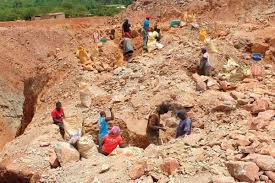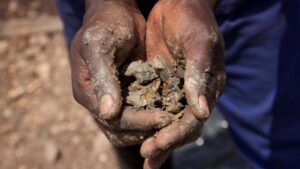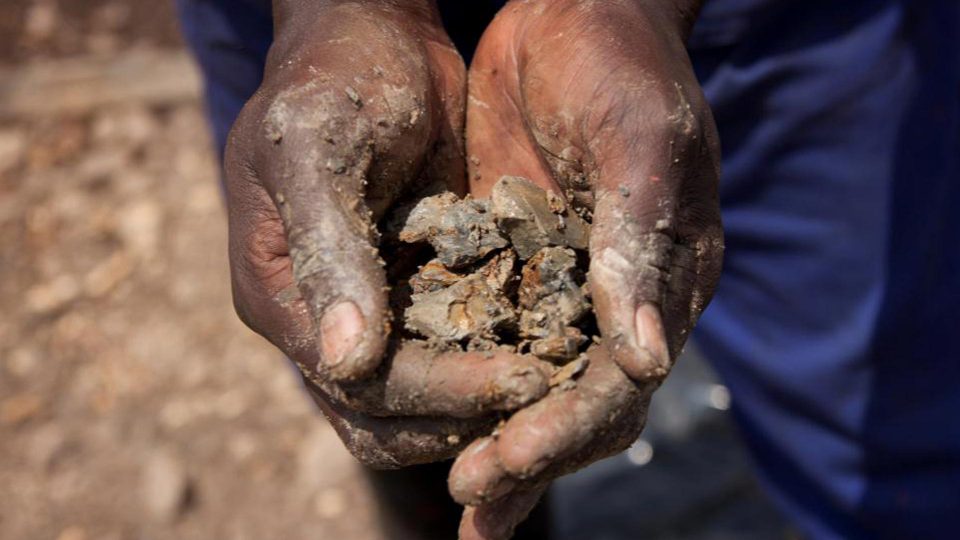Your cart is currently empty!
Gold Mining in Kenya | Top Locations, Companies & Investment Opportunities
Gold Mining in Kenya, Kenya, a country renowned for its vibrant landscapes, diverse wildlife, and rich cultural heritage, is also emerging as a significant player in the global gold mining industry. With vast untapped mineral resources, particularly gold, Kenya holds immense potential to transform its economy through responsible mining practices.
Gold mining, both artisanal and large-scale, has been a critical economic activity in the country for decades, particularly in the western regions of Migori, Kakamega, and Vihiga counties, as well as in northern areas like Marsabit.
However, the sector is fraught with challenges, including environmental degradation, health risks, regulatory gaps, and the pervasive issue of illegal mining and smuggling. Gold Mining in Kenya

History of Gold Mining in Kenya
Gold mining in Kenya has a history spanning over nine decades, with significant activity dating back to the 1930s. The discovery of gold in Kakamega in 1932 marked the beginning of organized mining in the region, with operations like the Rosterman mine producing approximately 250,000 ounces of gold between 1935 and 1950.
The Migori Greenstone Belt, part of the northern extension of the gold-rich Tanzanian Craton, has been a focal point for both artisanal and commercial mining activities.
Historically, mines like Macalder, operational from the 1930s to the 1960s, produced significant quantities of gold and copper, leaving behind tailings that still contain economically viable gold deposits.
During the colonial era, gold mining was primarily small-scale and artisanal, relying on rudimentary tools and methods. Post-independence, efforts to modernize the sector, such as the launch of the Kilimapesa Gold Mine in 1963, were hampered by bureaucratic inefficiencies and underinvestment. Gold Mining in Kenya
Despite these challenges, artisanal and small-scale gold mining (ASGM) has remained a vital livelihood source for rural communities, particularly in areas with limited employment opportunities.
The Current State of Gold Mining in Kenya
Artisanal and Small-Scale Gold Mining (ASGM)
ASGM is the backbone of Kenya’s gold mining sector, employing an estimated 250,000 miners and supporting the livelihoods of over 800,000 people.
This subsector contributes significantly to the economy, with legal ASGM activities generating approximately $224 million in 2022, representing over half of Kenya’s total mining output.
The sector is particularly prominent in western Kenya, including Migori, Kakamega, Vihiga, Narok, Siaya, and Turkana counties, where gold deposits are abundant.
Artisanal miners typically work in small groups, using manual labor and basic tools like pickaxes, shovels, and hand-driven hoists to extract gold from alluvial deposits or shallow underground mines. Ore processing often involves crushing the ore into fine powder and using mercury to form an amalgam with gold particles, a practice known as amalgamation. While effective and inexpensive, this method poses severe health and environmental risks due to mercury’s toxicity. Women, who make up approximately 40% of the ASGM workforce, are disproportionately involved in ore processing, exposing them to higher levels of mercury contamination.
Despite its economic contributions, ASGM remains largely informal, with many operations lacking proper licensing. This informality leads to exploitation by middlemen who purchase gold at prices far below the international market rate of $58 per gram, significantly reducing miners’ earnings.
Additionally, the lack of modern equipment and inadequate regulations exacerbate safety risks, with frequent mine collapses resulting in fatalities, as seen in Marsabit and Migori in 2024. Gold Mining in Kenya
Large-Scale and Commercial Mining
In recent years, Kenya has attracted international mining companies seeking to capitalize on its untapped gold reserves. The West Kenya Project, acquired by Shanta Gold from Barrick Gold in 2020, is one of the most promising ventures, hosting a 1.76 million-ounce gold resource grading 5.55 g/t.
Located in the Busia-Kakamega gold belt, this project is considered among the highest-grade gold projects in Africa, with the potential to produce over 100,000 ounces annually. Similarly, the Kilimapesa Gold Mine, operated by Caracal Gold, has a JORC-compliant resource of 14.05 million tonnes at 1.56 g/t, containing 705,000 ounces of gold.
The notable projects include the Migori Gold Project by Red Rock Resources, which has identified a 1.3 million-ounce resource and is exploring additional high-grade zones.
These commercial ventures employ modern techniques, such as carbon-in-leach (CIL) circuits and heap leaching, to improve efficiency and reduce environmental impact. However, large-scale mining operations are still limited compared to ASGM, and the sector’s contribution to Kenya’s GDP remains below 1%. Gold Mining in Kenya
Economic Contributions
The gold mining sector, particularly ASGM, plays a critical role in Kenya’s economy. In Migori County alone, gold mining injects an estimated $37 million annually into the local economy, providing a vital income source for communities with limited alternatives.
Nationally, the mining sector contributes approximately 0.8% to GDP, with ASGM accounting for about 60% of Kenya’s annual gold production of approximately 5 metric tons, valued at around $42.5 billion.
Gold mining also supports significant employment, with the sector employing around 140,000 artisanal miners directly and providing indirect benefits to over 800,000 people.
In regions like Taita Taveta, gemstone and gold mining contribute an estimated $120 million annually, with $80 million remaining in the local economy. Furthermore, miners’ spending on VAT-taxed goods generates approximately $1.6 million in annual tax revenue, surpassing royalty collections.
Despite these contributions, the sector’s potential is hindered by informality and smuggling. Kenya serves as a transit hub for smuggled gold from neighboring countries like South Sudan and the Democratic Republic of Congo, with illicit outflows exceeding two tons annually, compared to declared exports of just 672 kilograms in 2023. This smuggling deprives the country of significant revenue, undermining efforts to formalize the sector.
Environmental and Health Impacts
Gold mining, particularly ASGM, has significant environmental and health consequences. The use of mercury in gold processing is a major concern, as it contaminates water bodies, soil, and air, posing risks to both miners and surrounding communities.
Exposure to mercury can cause neurological damage, kidney problems, respiratory issues, and developmental disorders, particularly affecting women and children who are often involved in ore processing.
In Kakamega and Vihiga counties, soil samples from ASGM sites have shown arsenic concentrations up to 7,937 times higher than the U.S. EPA standard, alongside elevated levels of chromium, mercury, and nickel, increasing cancer and non-cancer health risks. Gold Mining in Kenya
Environmental degradation is another pressing issue. Unregulated mining leads to land degradation, threatening food security in rural areas where subsistence agriculture is a primary livelihood.
In Illo, a makeshift mining town in Marsabit, poor sanitation triggered a cholera outbreak in May 2023, resulting in 15 deaths. Additionally, abandoned mines and tailings contribute to long-term environmental damage, with limited efforts to restore affected lands.
Regulatory Framework and Government Initiatives
The Kenyan government has taken steps to address these challenges through legislative and policy reforms. The Mining Act of 2016 was a landmark achievement, recognizing ASGM’s importance and establishing a framework for licensing and regulation.
The Act mandates sustainable land use, requiring the restoration of abandoned mines, and aligns with global initiatives like the Minamata Convention on Mercury, which Kenya has signed to eliminate mercury use in mining.
In 2019, the government imposed a moratorium on new mining licenses to curb unregulated activities and conduct a nationwide mineral geo-survey. This moratorium was lifted in October 2023, following reforms that included declaring mineral smuggling an economic crime and establishing county-level artisanal mining committees to improve regulation and safety.
Projects like the planetGOLD Kenya initiative, supported by international organizations, aim to promote mercury-free technologies and formalize ASGM operations. The government is also constructing a gold refinery in Kakamega to regulate the sector and ensure fair pricing for miners.
Despite these efforts, implementation remains uneven. Many miners are unaware of licensing reforms, and enforcement of safety and environmental regulations is weak.
The lack of specific health and safety regulations for ASGM workers, coupled with limited ratification of international labor conventions, further exacerbates risks.
Social and Gender Dynamics
ASGM in Kenya is characterized by significant gender disparities. Women constitute 40% of the workforce but often occupy lower-paying roles, such as ore processing, and receive only 11% of the sector’s revenue in some areas.
These roles expose them to higher health risks, particularly from mercury exposure, and their contributions are often overlooked in policy discussions. Additionally, social issues like sexual violence, substance abuse, and child labor are prevalent in unregulated mining sites like Illo.
Tensions between local and migrant miners, particularly in northern Kenya, have also sparked conflicts over resource access. Locals often feel outcompeted by better-equipped migrant miners from neighboring countries, leading to fears of resource looting and land disputes.
Community-led initiatives, such as customary laws in Illo to address security and environmental concerns, demonstrate local efforts to mitigate these challenges, but government support is needed to scale these practices.
Future Prospects and Recommendations
Kenya’s gold mining sector holds immense potential to drive economic growth and reduce poverty, with the government aiming to increase the mining industry’s GDP contribution from less than 1% to 10% by 2030. To achieve this, several strategies are essential:
- Formalization of ASGM: Streamlining licensing processes and providing accessible financing for mercury-free technologies can empower artisanal miners and reduce exploitation by middlemen. Initiatives like the planet GOLD Kenya project and The Impact Facility’s lease-to-purchase program for equipment are promising models. Gold Mining in Kenya
- Environmental and Health Protections: Enforcing strict regulations on mercury use, providing personal protective equipment (PPE), and promoting alternative technologies like cyanide-free leaching are critical to reducing health risks and environmental damage.
- Infrastructure and Investment: Upgrading infrastructure, such as the planned tarmac road through the Migori belt, and offering tax incentives can attract foreign investment and support large-scale mining projects.
- Community Engagement and Gender Equity: Policies must address gender disparities by ensuring women’s inclusion in decision-making and providing training opportunities. Community profit-sharing models, as mandated by the Mining Act, can ensure equitable benefits.
- Curbing Smuggling: Strengthening surveillance and enforcement at borders and ports, such as Mombasa, can reduce illicit gold outflows and increase government revenue.
- Capacity Building and Education: Raising awareness about regulatory reforms and providing training on safe mining practices can bridge the gap between policy and practice.

Gold Mining Locations in Kenya
- Kakamega County (Lirhanda Corridor)
Region: Western Kenya
Notable Area: Rosterman Mine
Overview:
Kakamega is one of Kenya’s most promising gold mining regions. The Lirhanda Corridor, often referred to as Kenya’s “gold belt,” stretches through this area.
- Companies Operating: Shanta Gold (formerly Acacia Mining), Karebe Gold Mining
- Type of Mining: Both artisanal and commercial
- Key Activity: Exploration and small-scale mining
- Potential: High-grade gold discoveries continue to be reported
- Migori County
Region: Nyanza, Southwestern Kenya
Notable Areas: Macalder Mines, Rongo, Kehancha
Overview:
Migori has a long history of gold mining, dating back to the colonial era. It hosts both small-scale miners and international exploration companies.
- Companies Operating: Red Rock Resources, Mid Migori Mining Company
- Type of Mining: Artisanal and exploration-stage industrial
- Gold Deposit Style: Greenstone belt-hosted
- Challenges: Land disputes and environmental concerns
- Vihiga County
Region: Western Kenya
Notable Areas: Emuhaya, Luanda
Overview:
Vihiga has emerging artisanal gold mining activity, mostly by local miners. While not as developed as Kakamega or Migori, the region is drawing exploration interest. Gold Mining in Kenya
- Type of Mining: Artisanal
- Gold Availability: Alluvial and quartz vein-hosted gold
- Opportunity: Untapped potential for formal mining ventures
- Narok County (Trans Mara Region)
Region: South Rift Valley
Notable Area: Lolgorian
Overview:
Narok, especially the Trans Mara area, has recently attracted attention for its gold reserves, particularly in Lolgorian.
- Companies Operating: Shanta Gold (has major exploration licenses here)
- Type of Mining: Industrial exploration
- Geological Potential: Similar to Tanzania’s gold zones (e.g., North Mara)
- 5. Turkana County
Region: Northern Kenya
Notable Area: Lokichar Basin, Kalapata
Overview:
Turkana is a frontier mining area with less development but significant exploration potential. Gold traces have been found alongside oil exploration efforts.
- Type of Mining: Mainly exploration
- Potential: High, but requires infrastructure investment
- Future Outlook: Could be a new mining frontier if discoveries are confirmed
Major Gold Mining Companies in Kenya
- Shanta Gold Limited
Headquarters: Guernsey, with operations in East Africa
Operations in Kenya: West Kenya Project (formerly Acacia Mining assets)
Overview:
Shanta Gold is currently the most prominent industrial gold mining company operating in Kenya. It acquired the West Kenya Project from Barrick Gold (formerly Acacia Mining) in 2020.
- Flagship Project: Isulu-Bushiangala deposits in Kakamega County
- Gold Resource: Over 1.55 million ounces at high grades
- Focus: Exploration and near-term commercial production
- Significance: Expected to be one of Africa’s highest-grade gold projects
- Karebe Gold Mining Limited
Location: Nandi Hills, Nandi County
Type: Privately owned, Kenya-based company
Overview:
Karebe Gold is Kenya’s only licensed commercial gold producer (as of recent years) and has been operating since 2009.
- Mining Areas: Chemase and Chemelil, in Nandi Hills
- Production Method: Underground mining and processing plant
- Impact: Provides jobs and infrastructure to local communities
- Challenges: Faced legal disputes and license suspension in recent years
- Red Rock Resources Plc
Headquarters: United Kingdom
Operations in Kenya: Migori Gold Project
Overview:
Red Rock Resources is a UK-based exploration company with a large stake in the Migori Gold Belt, one of Kenya’s oldest and most mineral-rich areas. Gold Mining in Kenya
- Project Area: 245 km² of greenstone belt in Migori County
- Gold Resource: Over 1.2 million ounces JORC-compliant estimate
- Current Focus: Advancing to development and permitting phase
- Ownership Structure: Through its subsidiary Mid Migori Mining Company
- Migori Gold Limited (formerly Mid Migori Mining Company)
Location: Migori County
Ownership: Previously a joint venture with Red Rock Resources
Overview:
Migori Gold Limited operates in the same region as Red Rock and was previously involved in extensive exploration and feasibility studies.
- Project Type: Exploration and feasibility
- Challenges: Faced licensing issues with the Kenyan government
- Status: Currently restructuring and aligning with local stakeholders
- Mayfox Mining Company Limited
Headquarters: Nairobi, Kenya
Founded: 2012
Focus: Exploration of gold and base metals in Northern Kenya
Overview:
Mayfox is a local Kenyan mining company focused on gold exploration in Turkana County, one of the country’s most promising but underexplored regions.
- Project Area: Lokichar Basin, North West Kenya
- Exploration Stage: Early-stage geochemical surveys and drilling
- Goal: To discover and develop new gold reserves in frontier areas
- Vision: Promote local participation in the mining sector
Here’s a detailed look at gold mining investment opportunities in Kenya, highlighting key sectors, benefits, and risks for investors interested in this growing East African gold frontier:
Gold Mining Investment Opportunities in Kenya
Kenya is emerging as one of Africa’s most attractive gold mining destinations, with vast untapped reserves, improved regulatory frameworks, and rising investor interest. The country offers opportunities across the entire gold value chain, from exploration to refining and export.
- Exploration & Prospecting
Kenya’s greenstone belts, especially in Western Kenya (Kakamega, Vihiga, and Nandi) and Southwestern Kenya (Migori), remain largely underexplored despite proven deposits.
Opportunities:
- Acquire or partner in existing exploration licenses
- Joint ventures with local geologists or small companies
- Modern exploration techniques (geophysics, geochemical sampling)
Why Invest:
- High-grade gold discoveries (e.g., Shanta Gold’s 12.6 g/t Au at Isulu)
- Low initial investment with high upside
- Government support for exploration activities
- Mining & Production
Kenya has both artisanal and industrial gold mining zones. With increasing gold demand and rising prices, small- to mid-scale mining projects are viable and profitable.
Opportunities:
- Invest in existing gold mines like Karebe Gold or Red Rock Resources
- Build small-scale mines using efficient, low-cost models
- Acquire inactive mining licenses and revive operations
Why Invest:
- Low operating costs compared to other African markets
- Skilled local labor pool
- High local and regional gold demand
- Gold Processing & Refining
Most of Kenya’s gold is exported raw. Establishing refining or processing plants offers a high-margin investment opportunity. Gold Mining in Kenya
Opportunities:
- Set up gold smelting or refining facilities in key mining towns (e.g., Kakamega, Migori)
- Toll refining services for small-scale miners
- Introduce environmentally friendly processing (mercury-free)
Why Invest:
- Government incentives to boost in-country value addition
- Huge artisanal output with no formal refining channels
- Potential for export and jewelry industry support
- Gold Buying, Trading & Export
Kenya has a growing gold trade sector, especially in Nairobi, Mombasa, and Kisumu. Licensed traders can earn high returns through local buying and export.
Opportunities:
- Establish licensed gold buying centers near mining areas
- Partner with artisanal miners for consistent supply
- Export refined or semi-refined gold to Gulf, Europe, or Asia
Why Invest:
- High margins from buying low and exporting
- Legal framework now better structured (new Mining Act & gold export guidelines)
- Proximity to international markets (e.g., Dubai)
- Equipment Leasing & Support Services
Support services like equipment leasing, logistics, security, and mining consultancy are underserved.
Opportunities:
- Lease mining equipment (crushers, detectors, dredges)
- Set up supply chains for mining tools and protective gear
- Offer mining-related legal and permitting advisory
Why Invest:
- Growing demand from thousands of artisanal miners
- Recurring income from leasing and servicing
- Opportunities to scale regionally
Benefits of Investing in Kenya’s Gold Sector
- Stable Political Environment: One of Africa’s most business-friendly governments
- Mining-Friendly Legislation: The Mining Act (2016) encourages FDI and streamlines licensing
- Tax Incentives: Possible duty exemptions on imported mining equipment
- Strategic Location: Easy access to Mombasa port and proximity to regional buyers
Key Risks to Consider
- Licensing Delays or Disputes: Always conduct due diligence and work with legal experts
- Artisanal Mining Conflicts: Community engagement is essential to avoid clashes
- Infrastructure Limitations: Roads and electricity may be inadequate in remote areas
- Fluctuating Gold Prices: Global market conditions affect profitability
Conclusion:
Gold mining in Kenya is no longer just a niche for artisanal diggers; it’s a growing, high-potential industry attracting serious local and international investment. From the rich deposits of Kakamega and Migori to the emerging opportunities in Narok and Turkana, Kenya offers a unique mix of mineral wealth, political stability, and improving regulatory frameworks. Whether you’re an investor, trader, or mining entrepreneur, now is the time to tap into Kenya’s gold sector.
With proper licensing, strategic partnerships, and modern technology, gold mining in Kenya can deliver high returns, job creation, and long-term value. As gold prices remain strong and demand continues globally, Kenya stands out as one of Africa’s most promising frontiers for gold exploration and production. Gold Mining in Kenya


Leave a Reply